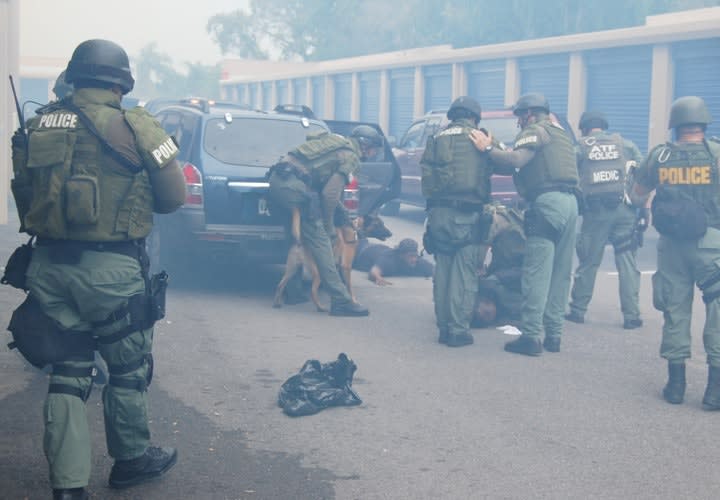Waco also showed the shortfall of planning a major raid with limited medical resources. The ambulance waited near Mount Carmel on standby, but medical personnel were unwilling to enter an active gunfight to treat wounded agents. Only two of the ATF agents involved in the raid were trained in tactical medicine. They provided life-saving care to many of the wounded. One of those two agents, Timothy Gabourie, had served as an operating room nurse before joining the agency. Gabourie, who is still an active agent and medic, spearheaded the founding of the tactical medic program so SRT operators could be given immediate battlefield care.
When the program was first established, medics were assigned to one of the ATF's five regional SRTs based in Washington, D.C., Detroit, Miami, Dallas, and Los Angeles. Medics can now be called to wherever they're needed whether with the SRT, arson and explosives investigation team (National Response Team), or with their own investigative groups.
Battlefield Medicine
Since 2007, the program has been under the supervision of a medical director at the Johns Hopkins University School of Medicine who oversees the "care under fire." While the program is based on military Tactical Combat Casualty Care (TCCC) guidelines for delivering combat care, it has been tailored for law enforcement, says Dr. Nelson Tang, the current medical director. All medical procedures must be approved, as well as any medical equipment the medics carry on missions.
"TCCC is one model that programs like ATF have looked at and adopted based on real-world field experience garnered from the military combat theater," Tang says. "While it is not the sole basis for what the tactical medic program does, it allows for ATF medics to respond quickly in a tactical environment."











